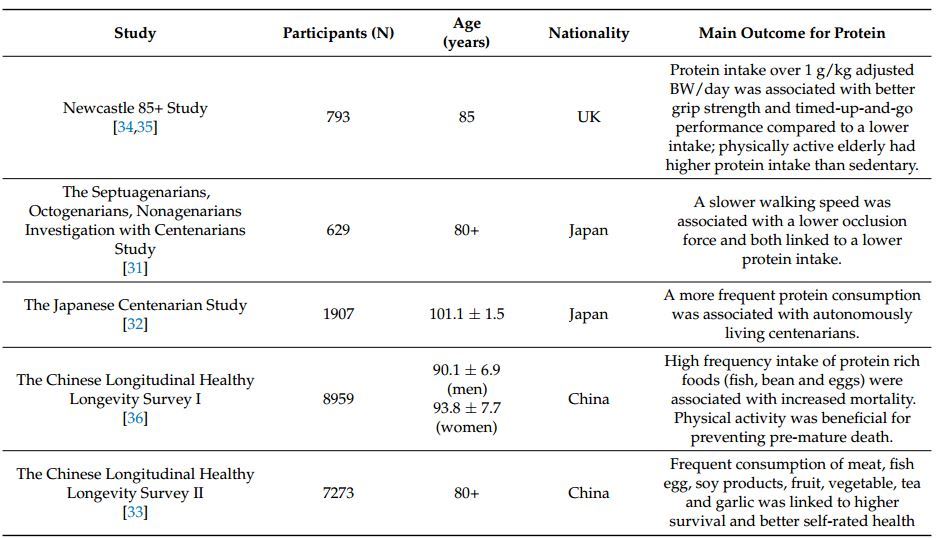Dietary Protein, Muscle and Physical Function in the Very Old
Nutrients 2018, 10(7), 935; https://doi.org/10.3390/nu10070935
Bernhard Franzke 1,†, [email protected] , Oliver Neubauer 1,2,†, David Cameron-Smith 3 and Karl-Heinz Wagner 1
1 Research Platform Active Ageing, University of Vienna, 1090 Vienna, Austria
2 School of Biomedical Sciences, Tissue Repair and Translational Physiology Program, Institute of Health and Biomedical Innovation, Queensland University of Technology, Brisbane, QLD 4059, Australia
3 Liggins Institute, University of Auckland, Private Bag 92019, Auckland, New Zealand
📄 Download the PDF from Vitamin D Life

There is an ongoing debate as to the optimal protein intake in older adults. An increasing body of experimental studies on skeletal muscle protein metabolism as well as epidemiological data suggest that protein requirements with ageing might be greater than many current dietary recommendations. Importantly, none of the intervention studies in this context specifically investigated very old individuals. Data on the fastest growing age group of the oldest old (aged 85 years and older) is very limited. In this review, we examine the current evidence on protein intake for preserving muscle mass, strength and function in older individuals, with emphasis on data in the very old. Available observational data suggest beneficial effects of a higher protein intake with physical function in the oldest old. Whilst, studies estimating protein requirements in old and very old individuals based on whole-body measurements, show no differences between these sub-populations of elderly. However, small sample sizes preclude drawing firm conclusions. Experimental studies that compared muscle protein synthetic (MPS) responses to protein ingestion in young and old adults suggest that a higher relative protein intake is required to maximally stimulate skeletal muscle MPS in the aged. Although, data on MPS responses to protein ingestion in the oldest old are currently lacking. Collectively, the data reviewed for this article support the concept that there is a close interaction of physical activity, diet, function and ageing. An attractive hypothesis is that regular physical activity may preserve and even enhance the responsiveness of ageing skeletal muscle to protein intake, until very advanced age. More research involving study participants particularly aged ≥85 years is warranted to better investigate and determine protein requirements in this specific growing population group
